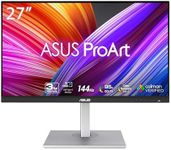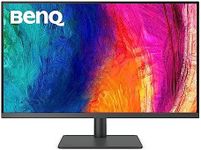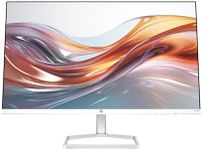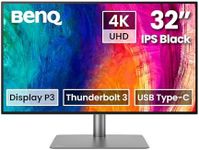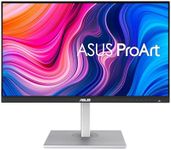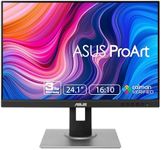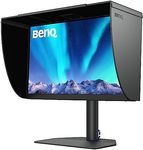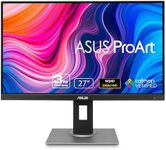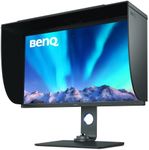Buying Guide for the Best Photo Editing Monitors
Choosing the right monitor for photo editing is crucial because it directly affects how accurately you see and edit your images. A good monitor will display colors, brightness, and details as true to life as possible, helping you make precise adjustments. When shopping for a photo-editing monitor, focus on features that impact color accuracy, image clarity, and comfort during long editing sessions. Understanding the key specifications will help you find a monitor that matches your editing needs and workflow.Panel TypeThe panel type refers to the technology used in the monitor's screen, and it greatly influences color accuracy and viewing angles. The most common types are IPS, TN, and VA. IPS panels are preferred for photo editing because they offer the best color consistency and wide viewing angles, which means your images look the same from different positions. TN panels are faster but have poorer color and angles, while VA panels have better contrast but can suffer from color shifting. For photo editing, IPS is usually the best choice, especially if you care about accurate colors and often view your screen from different angles.
Color GamutColor gamut describes the range of colors a monitor can display. The most common gamuts are sRGB, Adobe RGB, and DCI-P3. sRGB is the standard for web images, Adobe RGB covers more greens and is used in print, and DCI-P3 is popular in video work. A wider color gamut means the monitor can show more colors, which is important for editing photos that will be printed or used professionally. If you mainly edit for the web, sRGB coverage is enough, but for print or professional work, look for monitors with high Adobe RGB or DCI-P3 coverage.
Color Accuracy (Delta E)Color accuracy is often measured by Delta E (dE), which shows how close the displayed colors are to real life. A lower Delta E means better accuracy, with values below 2 considered excellent for photo editing. Some monitors are factory-calibrated for high accuracy, while others may need manual calibration. If you need precise color work, such as for professional photography or print, prioritize monitors with low Delta E values.
ResolutionResolution is the number of pixels on the screen, affecting how sharp and detailed your images appear. Common resolutions are Full HD (1920x1080), Quad HD (2560x1440), and 4K (3840x2160). Higher resolution means more detail and workspace, which is helpful for editing high-resolution photos and multitasking. If you work with large images or want to see fine details, a 4K monitor is ideal, but for smaller spaces or less demanding work, QHD or even Full HD can be sufficient.
Screen SizeScreen size is measured diagonally in inches and affects how much you can see at once. Larger screens (27 inches and above) provide more space for editing and comparing images side by side, while smaller screens are more compact and fit better in tight spaces. Choose a size that fits your workspace and editing style—if you often work with multiple windows or large images, a bigger screen can make your workflow smoother.
Uniformity and BrightnessUniformity refers to how evenly the monitor displays brightness and color across the entire screen. Good uniformity ensures that your edits look consistent no matter where they are on the screen. Brightness, measured in nits, affects how well you can see details, especially in bright rooms. For photo editing, a monitor with even brightness and at least 250-350 nits is usually sufficient. If you work in very bright environments, higher brightness can help, but uniformity is more important for accurate editing.
Adjustability and ErgonomicsAdjustability means how easily you can change the monitor's height, tilt, swivel, and rotation. Good ergonomics help you stay comfortable during long editing sessions and allow you to position the screen for the best viewing angle. If you spend hours editing, look for a monitor with flexible adjustments to reduce strain and improve your workflow.
ConnectivityConnectivity refers to the types and number of ports available, such as HDMI, DisplayPort, USB-C, and USB hubs. The right ports make it easier to connect your computer and other devices. If you use modern laptops or want to charge devices through your monitor, look for USB-C with power delivery. Multiple ports also let you connect more than one device at a time, which can be useful for a flexible editing setup.
